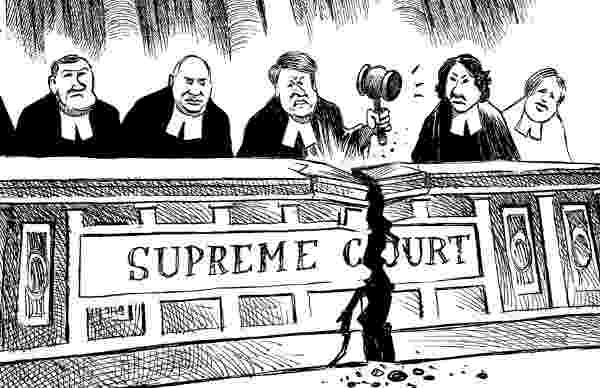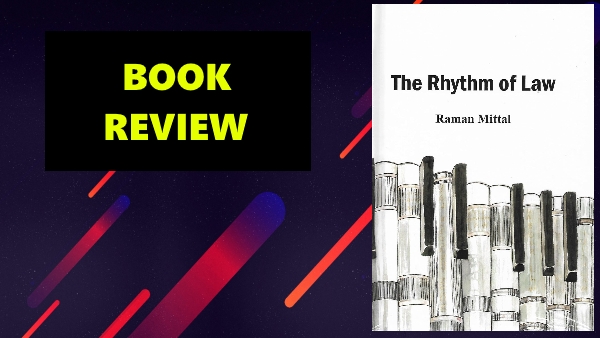Before knowing the history of the Indian Constitution, do you ever wonder how our country is governed by having huge administrative departments, committees, lawmakers, the judiciary? How do these important governing bodies coordinate with each other and who tells them what is their role?
The answer is pretty simple! It is the Constitution of India which guides us and gives directions to citizens of India for what is constitutional and what is not. The Constitution of India is the document that lays down certain principles of governance and coordination between various departments.
If someone asks me that despite India being a secular nation, what is that one thing Indians believe in? My answer would be, of course, ‘ the Constitution of India’, as this is the soul document that binds all Indians together, coming from diverse backgrounds, cultures, and belief systems. The Constitution of India is a breathing document or rather a living document that makes our country united and prosperous despite being so vast and diverse.
HOW CONSTITUTION OF INDIA WAS MADE?
To look at this, let’s first know a brief history of India to understand the picture more clearly.
In the early 1600s, when the British East India Company arrived in India, it saw internal conflicts between the kings and rulers of India as an opportunity to create a divide among the rulers of India. It was a gradual process and slowly they started capturing India’s prominent ports and ultimately they created a monopoly over all Indian rulers. In other words, it was a shift from poorly decentralized geographical powers to centralized power, i.e. Britishers. It was too late when Indians realized that Britishers have captured India almost fully.
It was in 1857 the initial protest took place against the hegemony of Britishers, which was later known as the Revolt of 1857 – India’s first freedom movement. This incident made the British parliament realize that if all Indians unite someday, it would have been their last day in India.
To tackle this situation, British Parliament tried to clean their image by forming a 15 membered ‘Indian Council’ and to show that we’re a good government in front of Indians and ultimately first Indian Councils Act came into force in 1861. So, again, we can say that the centralization of power was at its peak in British rule started shifting again towards the decentralization of power.
In 1861, when Britishers tried to be a good government by bringing the Indian Councils Act in 1861, it was just to cool down the Indians. It was not at all a full decentralization of power. This formula of being a ‘so-called’ good government worked successfully till the time Mahatma Gandhi arrived in India in 1914.
HISTORY OF INDIAN CONSTITUTION AFTER ARRIVAL OF MAHATMA GANDHI:
When Mahatma Gandhi and his fellows noticed this fake decentralization of power, they opposed it. Mahatma Gandhi supported Britain in the First World War in exchange for provincial autonomy for India, and Britishers came with the Government of India Act in 1919.
In this Act, the British government separated the Legislative list. The two new lists were the Federal List and the Provincial list. Indians were in hope of getting provincial autonomy, but all the major powers were still with the Britishers, and Indians were left with limited powers. For example, in 1919, only 10% of the Indians had voting rights.
But soon Mahatma Gandhi and his colleagues realized it was again a clever move by the British government as the actual power was still with the British Government and finally, in September 2020, Gandhi launched Non-Cooperation Movement. You might have heard of this movement in your school time.
Nevertheless, it was because of the Government of India Act 1919, a commission known as the Simon Commission was set up in 1928, which gave recommendations for constitutional reforms in India. These recommendations are also known as WHITE PAPERS, and they were first published in 1930.
But Indians opposed the Simon Commission as all the members in this commission were Britishers. Indians did not accept this. Indians might have learned to protest efficiently by that time. You might have heard the famous slogan ‘Simon Go Back!’
Britishers realized the power of protests and said that they will consider the opinions of Indians and will give Dominion Status to India soon. ‘Dominion’ means even legislative and political control is with the people, but still there shall be a King or Queen of the territory.
But Simon Commission was the crucial step in bringing the Government of India Act 1935. This Act was much better as compared to the previous Government of India Act 1919. This Act contained many provisions in favor of Indians. Believe me or not, over 50% of our current Indian Constitution is borrowed from this Government of India Act 1935.
And because of the Government of India Act 1935, steps were taken to form the All India Federation (AIF) i.e. a combination of all Indian States. India was majorly divided into two types of regions. One was British ruled ‘British colonies’ and the other was the region of ‘Princely States’. The Indian Princely States were already in a contract with the British government known as ‘Doctrine of Paramountcy’, which allowed them to rule over India except for the princely states. So, this contract was very crucial for the independence of the Princely States from Britishers. That’s why the Princely States denied the proposal of the All India Federation.
However, there was some introduction of autonomy because of the distribution of powers into 3 lists, i.e. Federal List, Provincial List, and Concurrent List, but still ‘Dominion Status’ for India was far from reach.
In 1940, Adolf Hitler attacked Britain, which made Britishers weak. Britishers asked for help from Indians through ‘August Offer’ in exchange for ‘Dominion Status for India. This August Offer of 1940 was finally formalized through the ‘Cripps Mission’ of 1942.
But Muhammad Ali Jinnah, who was the head of the Muslim League at that time, rejected the ‘Cripps Mission’. And due to the lack of a satisfactory response from the British Government, Mahatma Gandhi finally launched Quit India Movement in 1942, which made Britishers weaker.
Under this pressure, the British government again sent the 2nd Cabinet Mission to India with the same proposal. This time, Muhammad Ali Jinnah also accepted this proposal as he was dreaming of his own country ‘Pakistan’.
It was only in June 1946 that a Constituent Assembly was formed to draft a separate Constitution of India and to make India an independent nation. There were a total of 389 members in the constituent assembly, out of which 296 members were elected and the Princely States nominated 93 members. This, of course, means that by this time, Princely States also accepted the offer.
The first meeting of the Constituent Assembly was held on 9th December 1946, but only 207 members out of a total of 389 members attended it. The temporary chairman of the Constituent Assembly was Dr. Sachidanand Sinha.
After this, on 29th August 1947, the Constituent Assembly set up a Drafting Committee to draft the Indian Constitution. MN Roy, which consisted of 7 members in total, proposed this drafting committee. This drafting committee, formed by Constituent Assembly, was headed by Dr. Bhim Rao Ambedkar, who was later known to be the father of the Indian Constitution.
After more than a year in November 1948, the drafting committee submitted a final draft of the Indian Constitution to the Constituent Assembly. Constituent Assembly proposed innumerable amendments to this draft, but only one-third of these proposed were finally accepted.
And on the auspicious day of 26th November 1949, we Indians adopted the newly formed Constitution of India. One thing that should be noted here is that after the first meeting of the Constitution Assembly, it was Jawahar Lal Nehru who proposed ‘Objectives Resolution’ to the Constituent Assembly which later became the source for making the Preamble of the Indian Constitution.
On 3rd June 1947, Lord Mountbatten Plan was proposed in which Muhammad Ali Jinnah’s demand for Pakistan was accepted. The most disappointed person was Sardar Vallabh Bhai Patel as he always opposed the idea of two nations and believed in Unity amongst people.
On 18th July 1947, British Parliament passed the Indian Independence Act and on 15th August 1947, India got its Independence and became a free and sovereign nation as on this date British Rule was formally ended. After Independence, there was no viceroy or Majesty of India. There was only the Governor-General of India till the time India drafts its own Constitution and adopts it formally.
Government of India Act regulated the period between the Independence of India and the adoption of the Constitution 1935, that’s why it is also known as the Interim Constitution of India.
Article 395 of the Indian Constitution says that India will not follow the Indian Independence Act of 1947 and Government of India Act 1935 after the enactment of the Indian Constitution, i.e. after 26th January 1950.
You might think that when we adopted the Indian Constitution on 26th November 1949, why did we wait till 26th January 1950? This was done deliberately to commemorate Poorna Swaraj, which Indian Freedom Fighters adopted unanimously on 26th Jan 1930 and declared India an independent nation.
You know sharing is caring! Share this content with your friends to help them understand the Basics of the Constitution of India.

![HISTORY OF INDIAN CONSTITUTION [Ultimate Explanation]](https://lawplanet.in/wp-content/uploads/2020/10/history-of-making-of-the-indian-constitution.webp)



